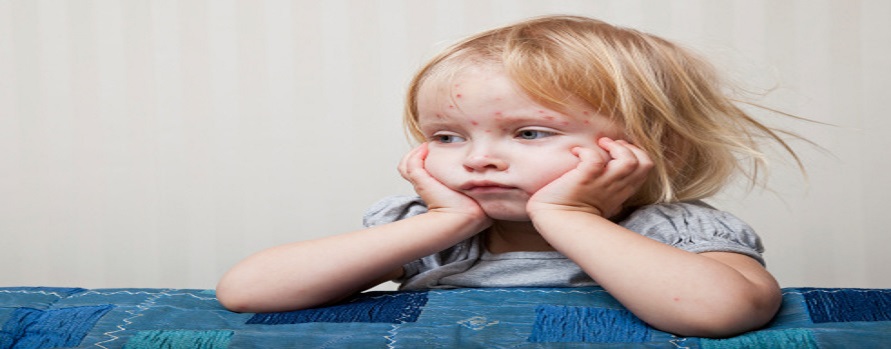What causes Hives in Kids?

Hives are raised, and itchy bumps appear on the skin. Although most commonly found around the neck, elbows and knees, hives can be found anywhere on the body.
Hives are caused by a reaction of our immune system to an allergen. Hives are common in children and usually go away on their own within 6 weeks. See below for more information on what causes hives in children.
Each year, about 15 million Americans suffer from acute hives, but the causes are often not known. What causes hives in kids? In this article, you will learn exactly what causes hives in infants and children, as well as how to treat and prevent them.
What causes hives in kids?
The most common trigger of hives is an allergic reaction to something you come into contacts with, such as food, medicines or insect bites.
But other factors may play a role in producing hives:
- Infection with virus or bacteria (such as chickenpox)
- Exposure to cold temperatures (such as swimming)
- Physical exertion (such as running)
- A stressful situation
- Allergies (such as food, pollen or pet dander)
- Medications
Common food allergies in children
Food allergies are common in children, and they can develop at any age and can be a serious health issue.
According to the Centers for Disease Control and Prevention, food allergies affect about 4 per cent of children under 18 years of age.
The foremost common food allergies in children are:
- Eggs allergy
- Cow’s milk allergy
- Soy allergy
- Peanut or nuts allergy
- Wheat allergy
- Fish and shellfish (shrimp, lobster, and crab) allergy
Allergy symptoms
Cow’s milk, soy and wheat allergies. These are the three most common food allergies in infants and children.
The symptoms of these allergies can include:
- Nausea, vomiting and diarrhoea
- Rash or hives on the skin
- Swelling of eyelids, face or lips
- Sneezing, nasal congestion or stuffy nose
Treatment for hives in children
A severe form of hives is called angioedema. This can cause swelling in the face, lips, tongue or throat that cannot be swallowed. Angioedema is much more serious and dangerous than hives and should always be treated as an emergency by a doctor.
Hives usually go away by themselves within a few days. If your child has hives for longer than two weeks or if they’re severe enough to cause difficulty breathing or swallowing, call your doctor right away. Hives area unit typically treated with associate degree oral medicament.
Your child’s doctor will likely prescribe one of two types:
First-generation antihistamines, such as diphenhydramine (Benadryl) and chlorpheniramine (Chlor-Trimeton), work well to relieve symptoms but can make your child drowsy and cause other side effects.
Second-generation antihistamines, including loratadine (Alavert, Claritin) and fexofenadine (Allegra), have fewer side effects than first-generation drugs. They may be less likely to cause drowsiness or dry mouth.
If your child has hives that tend to come on suddenly and severely, she may need an injection of epinephrine right away to stop the reaction. This can save her life if she has trouble breathing or goes into shock.
Most hives will go away on their own after a few days. But if your child has a bad reaction to something, it’s important to seek help from your doctor. Treatment for hives in children depends on the cause and severity of the hives.
Home treatment for hives
- Use cool compresses or ice packs to reduce swelling and itching.
- Calamine lotion can help relieve itching. You can also try a mild hydrocortisone cream (1 per cent) or ointment (0.5 per cent). They may weaken the skin’s natural protection against infections and irritants.
- Apply an antihistamine cream or spray, such as diphenhydramine (Benadryl), cetirizine (Zyrtec), loratadine (Claritin), or fexofenadine (Allegra). These medications can help control itching during an allergic reaction
If your child has had an allergic reaction to something, call 911 or go to an emergency room right away if he or she has difficulty breathing, severe swelling of the face or throat, or trouble swallowing.



